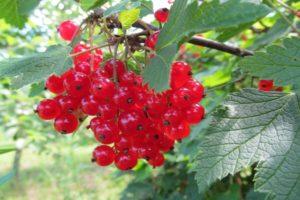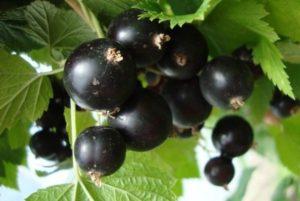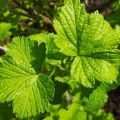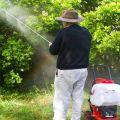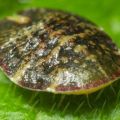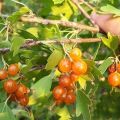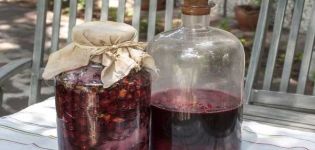Measures to combat rust on currants, treatment with drugs and folk remedies
A currant bush can be seen in almost every summer cottage and garden plot. This plant is quite unpretentious to care for, but at the same time it gives a good harvest. But sometimes the bush starts to hurt. Red spots appear on it, which grow rapidly. And in order to save the plant, you need to know what kind of rust occurs on the currant, and what measures to combat it exist.
Types of rust and signs of appearance on red and black currants
Rust is a shrub fungal disease that causes great harm to the plant itself. The main reason for the appearance of such an ailment is coniferous trees growing near currants.
Goblet rust
Most often, goblet rust affects shrubs growing in the vicinity of a pine or cedar forest. First, the fungal spore gets on a pine or cedar branch, then it develops and multiplies under the bark of the tree.
As soon as spring comes, bubbly growths appear on the surface of the bark, each of which turns into a red spot.
Inside it are the spores of the fungus, which first infects sedge, and then currants. The very process of infection occurs with the help of wind and insects, which carry the fungus on their paws. This ailment progresses from May to early June.
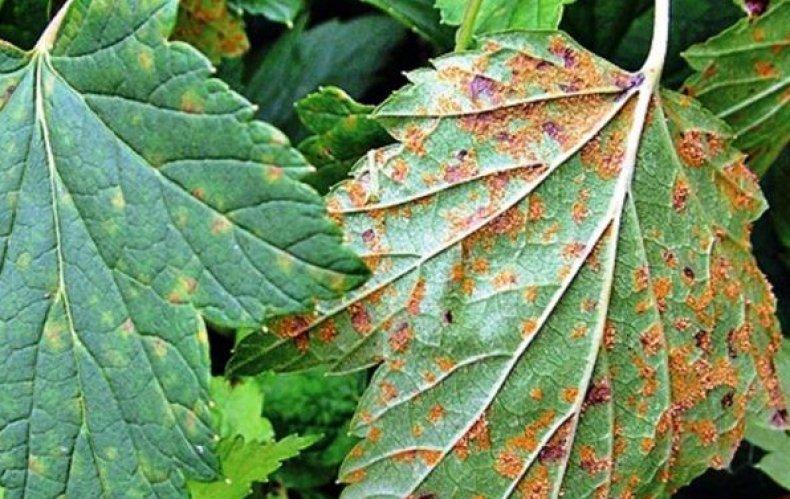
Columnar rust
This type of rust affects the upper part of the leaves of the currant bush. From the outside, they are covered with yellow spots, but from the inside, the leaves seem to be showered with orange dots. Fungal spores are located inside them. This disease progresses most of all in July and August. It is during this period that rusty spots can appear on the currants.
Causes of occurrence
The reason for the appearance of rust on currant leaves is a fungus that develops only in a humid and warm climate. When it comes to a dry summer, then during such a period, the disease rarely appears on the leaves of the bush.
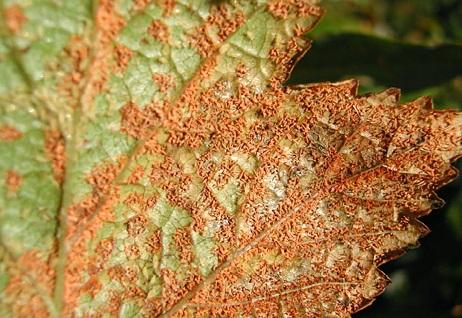
Most often, rust affects currant bushes growing in low-lying areas and where plants are densely planted. The rest of the provoking factors contributing to the appearance of rusty spots on the leaves of the currant include:
- Invasion of leaf aphids.You can recognize this insect by small black dots that appear on the back of the leaf. Aphids begin to feed on the sap of the plant, which is why it becomes covered with swellings of a bright yellow color. The shrub grows poorly and gradually dies.
- Spider mite. Another pest that causes currant rust. This insect settles on the leaves of a bush, as a result of which a swelling with a rusty tint appears on them. After a while, the leaves become completely colorless, after which they fall off.
- Currant gall midge. This insect also causes the plant to rust by laying yellow-brown eggs on it. After extensive damage, the bush dies.
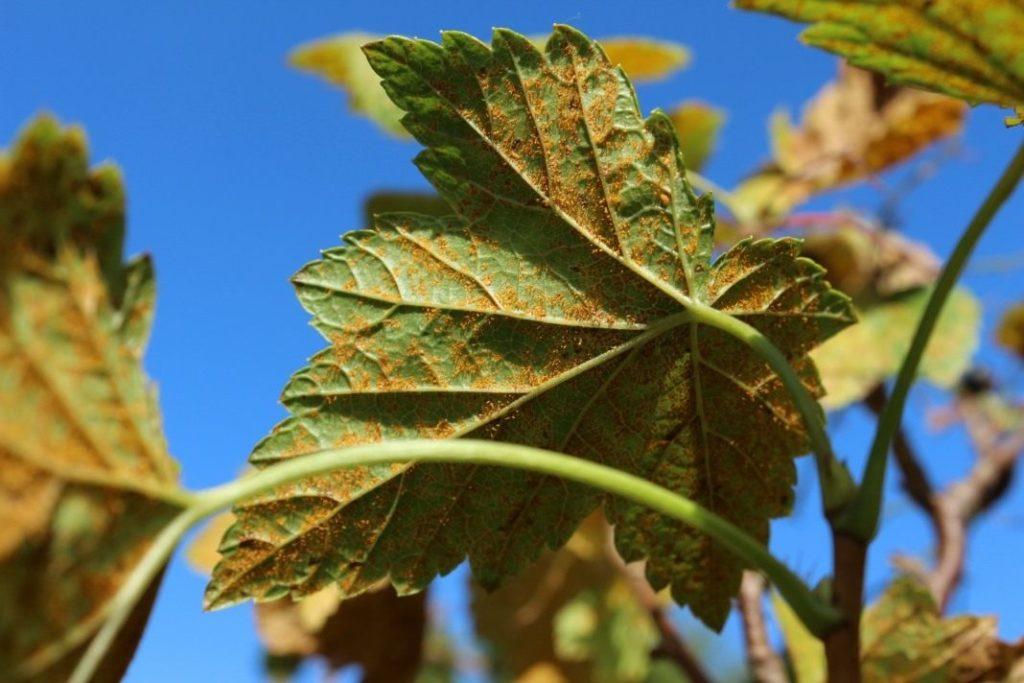
What is the danger to currant bushes?
Rust is a dangerous fungal disease. Damaging the currant bush, it contributes to its gradual death. If untreated, by the end of summer, the lower part of the leaves is covered with rust. The spots grow and change their shade to brown and red. The fungus covers the entire affected area.
The currant bush begins to change outwardly. The leaves become hard and terry. The berries are covered with an orange bloom. It is no longer possible to eat them. Then the fruits dry out and crumble. The shrub, due to the disease, weakens greatly. In this state, he goes to winter. As a result, in the spring the shoots remain frozen and cannot subsequently begin to ripen.
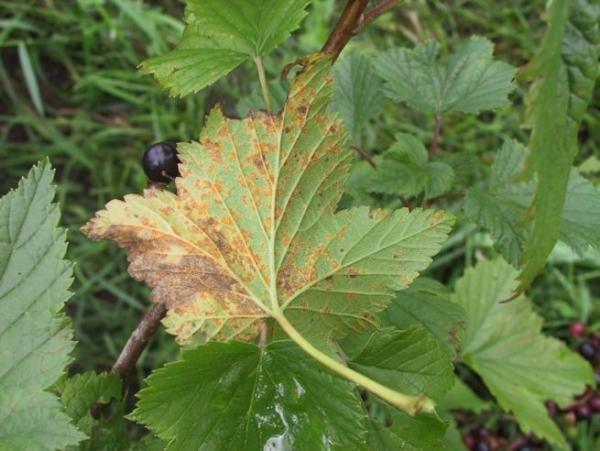
Cause of Columnar Rust
The main cause of the appearance of columnar rust is a fungal spore, the intermediate host of which is sedge.
If this herb grows near a currant bush, then in the spring it will be infected.
Trees such as pine and cedar are also believed to be responsible for the spread of spores. And given that currants are very susceptible to fungal pathogens, there is a risk of infection. In this case, it is better to choose such resistant species as the black variety of the Selechinskaya currant or the Primorsky champion, Vosmaya Denisova and Chulkovskaya.
Measures to prevent the spread of the fungus
Preventive measures aimed at combating rust on the currant bush should be carried out at the beginning of the spring period, while the buds have not yet appeared. As a preventive measure, the land under the bushes should be fed. For this, it is better to use phosphorus-potassium fertilizer. As soon as the leaves begin to bloom, they, along with the branches, need to be sprayed with Bordeaux water.
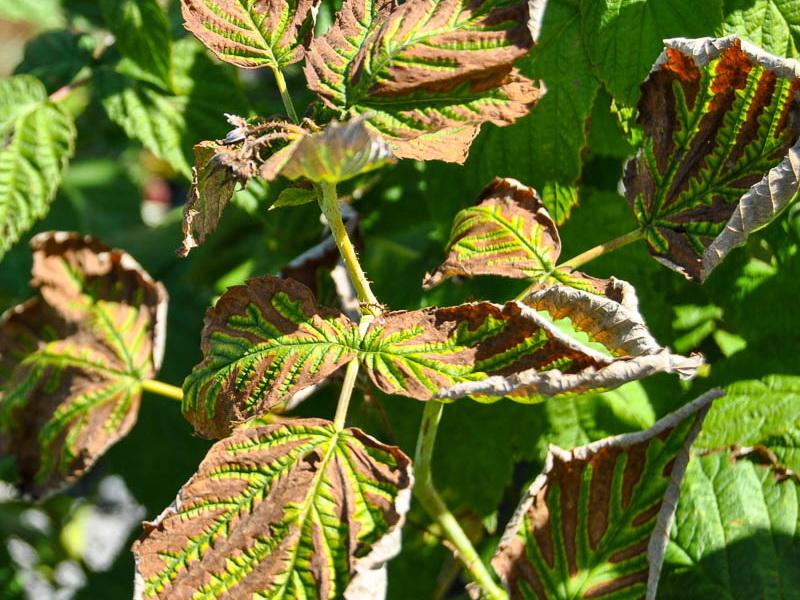
In no case should you plant currants near coniferous and pine trees. As soon as autumn comes, the currant branches are treated with a 2% solution of Karbofos.
How to process currants
Currants can be processed both with chemical agents and with biological agents and solutions prepared on their own. If the currant leaf is severely affected by rust, then you cannot do without the use of chemicals.
But as a prophylaxis, you can use biological products or adopt some popular recipe for preparing a solution.
Store funds
Fitosporin-M is considered a good drug. It is able to fight thirty types of fungus. It can be used both during flowering and fruiting.

The rest of the store products that are able to resist rust include:
- copper oxychloride;
- drug Abiga Peak;
- Cuproxat;
- Strobe;
- Bayleton;
- Vectra;
- Oxyhom;
- Ordan;
- Topaz.
Folk ways to deal with rust
Before budding, currants can be treated with a decoction based on onion peels. Then the shrub should be sprinkled with an infusion of garlic and tobacco. To do this, 200 grams of tobacco dust must be diluted in two liters of boiled water, into which six heads of garlic are pre-cut.
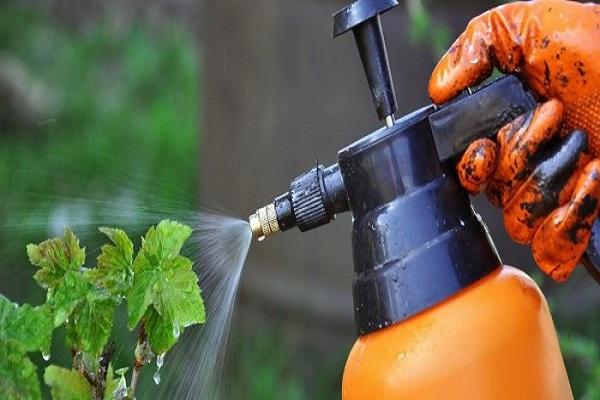
The solution is infused for three days, after which a sore bush is treated with it. The sediment that remains after the solution must be distributed under the bush, sprinkling it with a little earth.
Rules for conducting therapeutic measures
In order to save the shrub, you need to know how to deal with the rust that appears on the currant. First, you should collect all the fallen leaves, which are necessarily burned. This will stop the spread of the fungus itself. Then you need to dig up the soil under the bush.
A solution prepared on the basis of garlic water and tobacco dust will also help to fight rust.
A currant bush can be treated with such biological agents that are able to fight not only the fungus, but also pests. It:
- Planriz;
- Gaupsin;
- biological product Fitosporin;
- Trichodermin;
- Chistofor;
- Drink Plus.
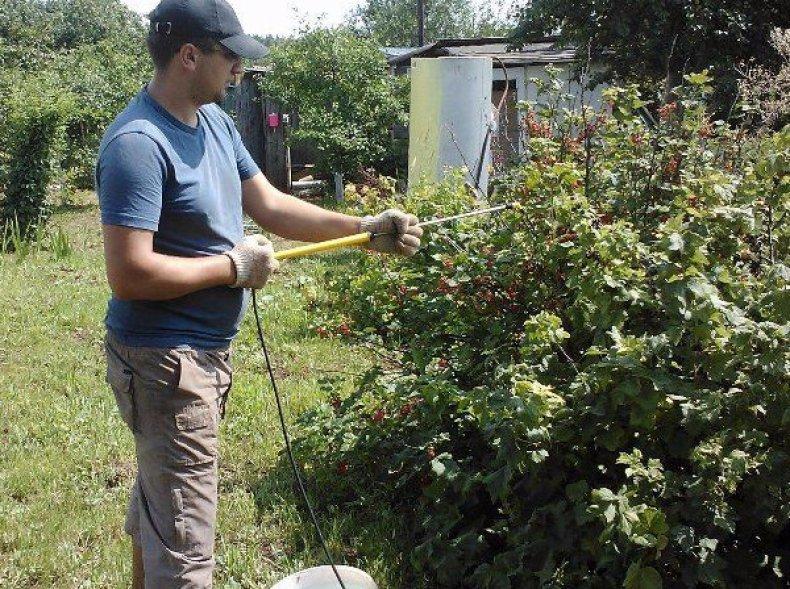
Processing time
The spraying procedure will depend on how rusty the bush is, and what drug it will be treated with.
If an infection has occurred, then the first treatment should be carried out before flowering, when the leaves are just beginning to bloom.
The second spraying should be during the bud formation period. And the third treatment takes place when the flowering ends. If the bush is severely affected, then you will have to do the fourth spraying after ten days after the third.
Spraying scheme for bushes
Spraying patterns for a currant bush will depend on what exactly it is being processed. If this is an infusion of onion peel and a garlic solution, then first the bush must be treated with garlic water, and then, two weeks later, it is sprayed with onion peel.

The currant bush is treated with copper chloride and Bordeaux liquid three times, with an interval of four weeks. It is recommended to do this during the growing season.
With drugs such as Strobi, Oxyhom, Kuproksat, Ordan, Vectra and Topaz, spraying is done twice, with an interval of ten days. Chistoforom and Propi Plus processing is carried out three times a season. Treatment is carried out either in the spring - before the leaves have blossomed, or after flowering.
Disease prevention methods
Methods for preventing the disease can be divided into:
- mechanical;
- chemical;
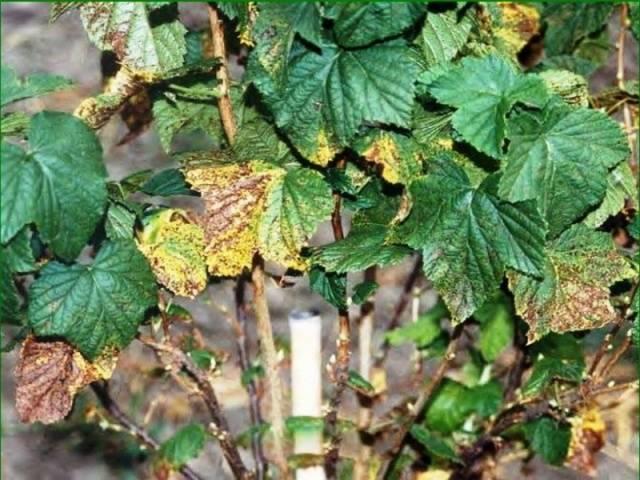
Mechanical control consists in treating the shrub with hot water. This method will allow you to destroy pests and increase the plant's resistance to various diseases.
After that, you should cut off all dry branches. If a large, thick branch is cut, then the place of the cut is smeared with garden varnish. All deleted branches and leaves are destroyed. This measure helps to protect the shrub from infection with the fungus.
The chemical method consists in treating the bush with prophylactic drugs. In March, it will be useful to spray the shrub and the soil under it with means - Nitrofen or Fundazol. They will help protect against rust development and defeat currant bush disease.
